Research
Overview of my previous works.
My research focuses on stellar cataclysmic events such as neutron star mergers (BNS), supernovae, and gamma-ray bursts (GRBs). In particular, I study the dynamics of astrophysical jets launched by these explosive phenomena and their electromagnetic counterparts. Below is a summary of my work (intended for non-experts).
Acronyms Used
- BNS — Binary Neutron Star (merger)
- GRB — Gamma-Ray Burst
- CSM — Circumstellar Material
- KN — Kilonova
- LGRB — Long Gamma-Ray Burst
- SGRB — Short Gamma-Ray Burst
- r-process — Rapid Neutron Capture Process
A Scenario to Explain the Mysterious EP240414a
Hamidani et al. 2025b
EP240414a is an explosion discovered by the Einstein Probe mission, displaying features that deviate from standard long GRBs (LGRBs). In this work, we proposed that these peculiarities can be naturally explained by a jet that was significantly weakened by interaction with extended circumstellar material (CSM). Our work highlights the importance of the CSM in shaping GRB jets.
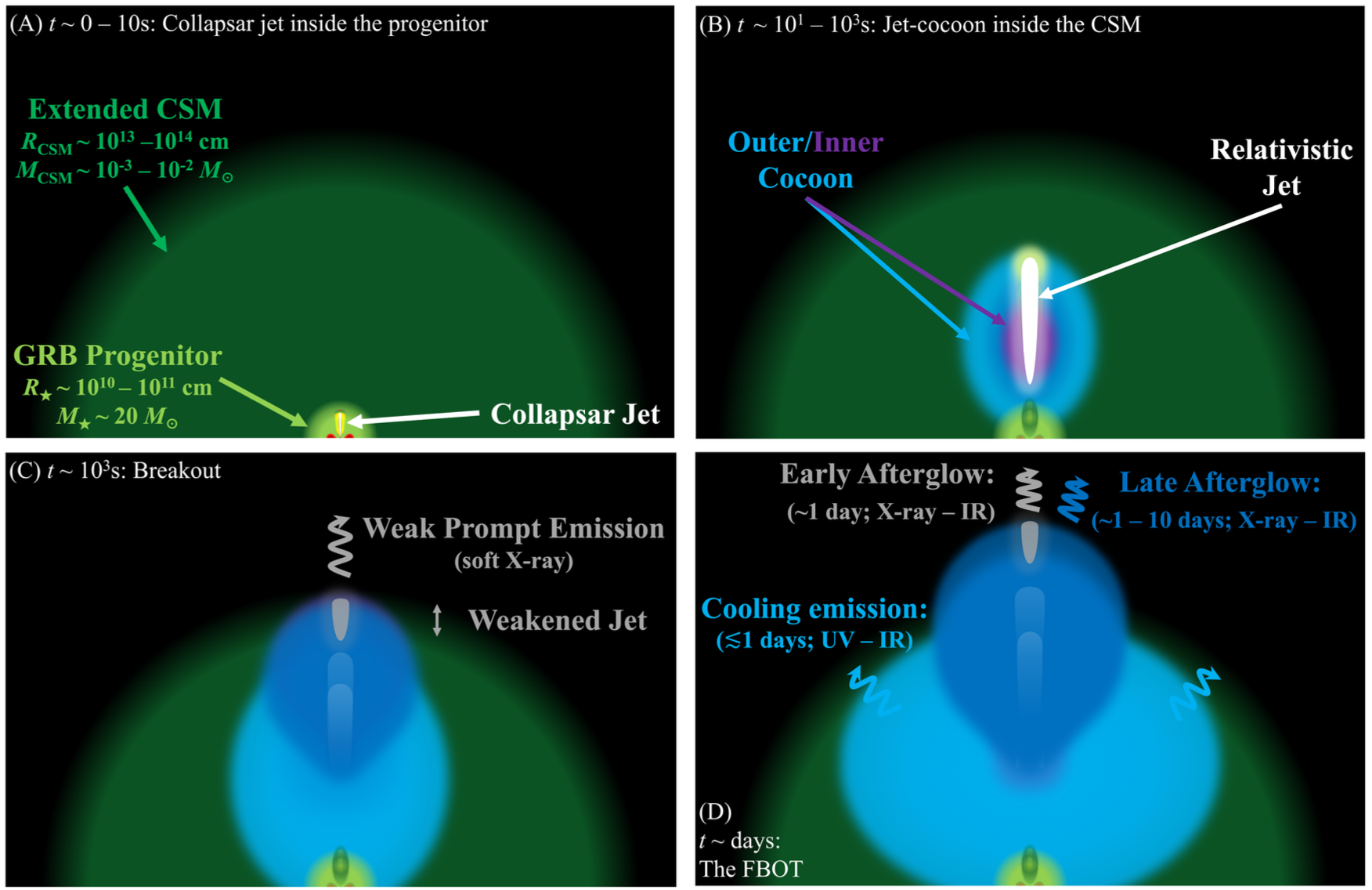
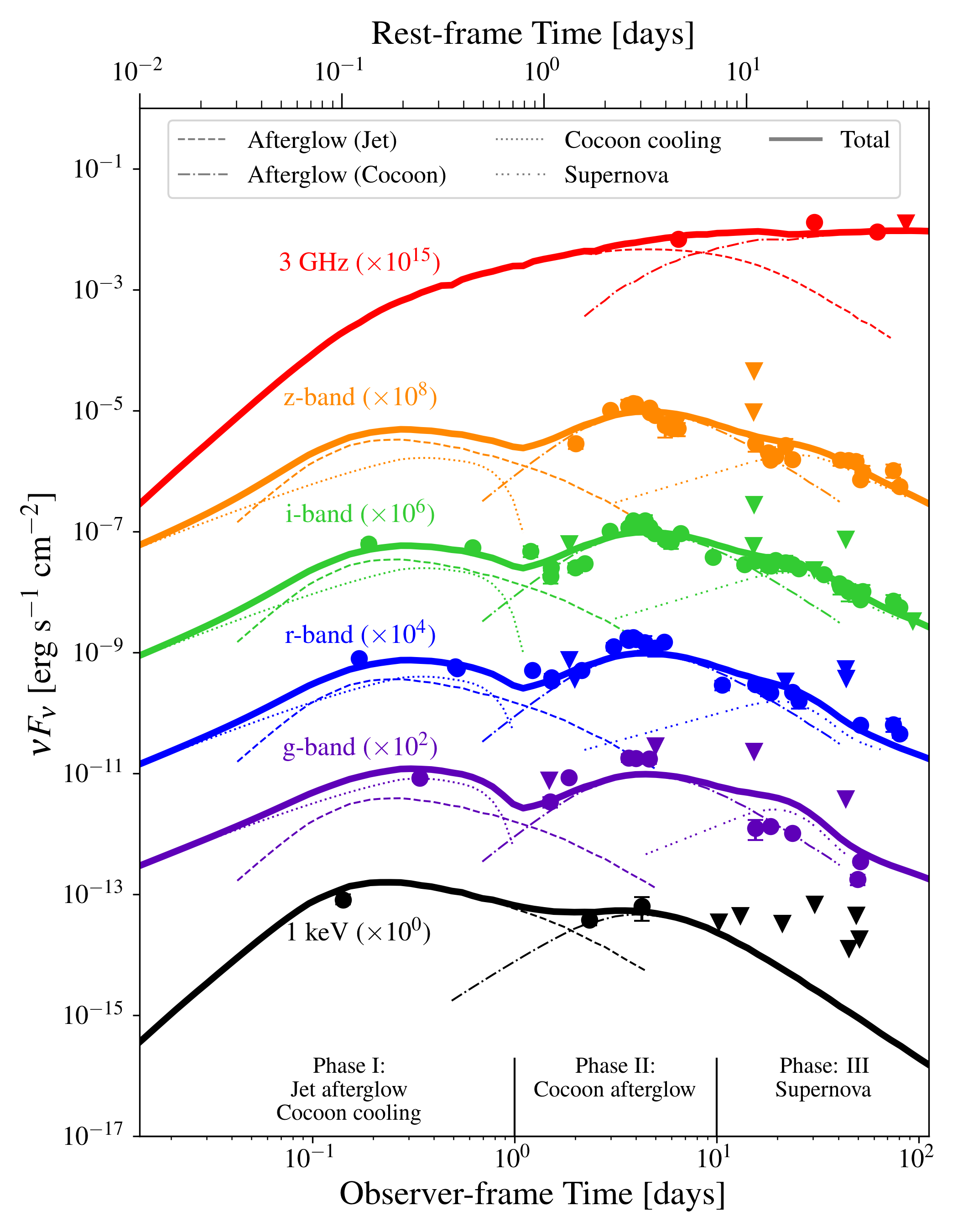
GRB Jet Propagation in Circumstellar Material — Solved Analytically
Hamidani et al. 2025a
We presented a generalized analytic model for GRB jet propagation through extended CSM. We used this analytic model to explore how the CSM properties shape the jet, identifying conditions for successful / failed jets and linking them to the diversity of observed transients.

GRB 211211A: Engine-powered vs. r-process-powered Kilonova
Hamidani et al. 2024b
Kilonovae (KNe) are transients powered by the radioactive heating of freshly synthesized r-process elements. We found that the early emission in the short GRB (SGRB) GRB 211211A cannot be explained by r-process heating alone. Instead, late-time energy injection from the central engine provides a more consistent explanation for its observed properties.
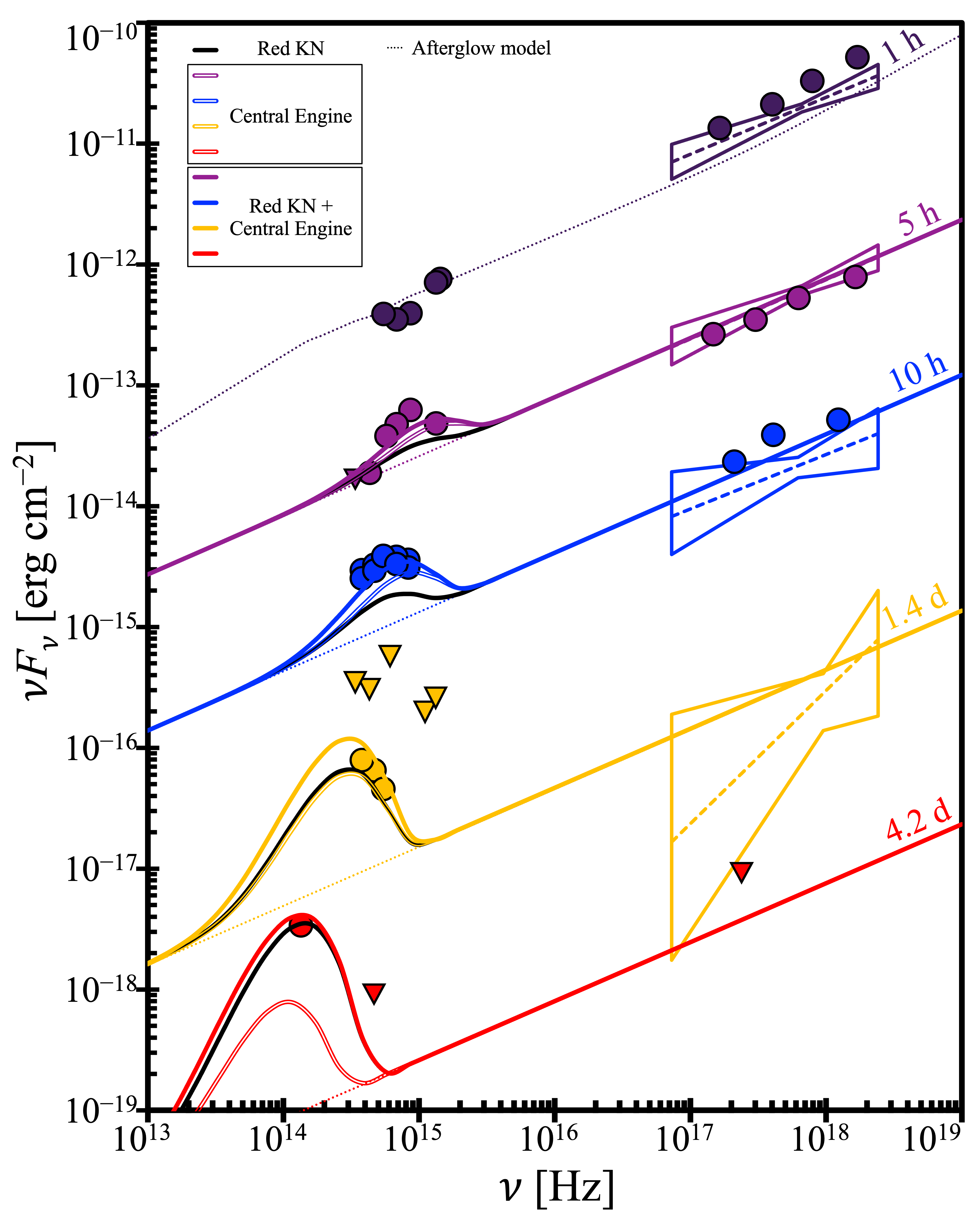
Late Engine Activity and Neutron Star Mergers
Hamidani et al. 2024a
Observations suggest that central engine activity can persist well beyond the prompt SGRB emission. In this work, we investigated the observable signatures of such late-time engine activity in BNS mergers, via analytic modeling of the late-time engine jet. We provided predictions for the resulting X-ray to optical emission, which will help us understand the SGRB central engine and the nature of the merger remnant from future observations.
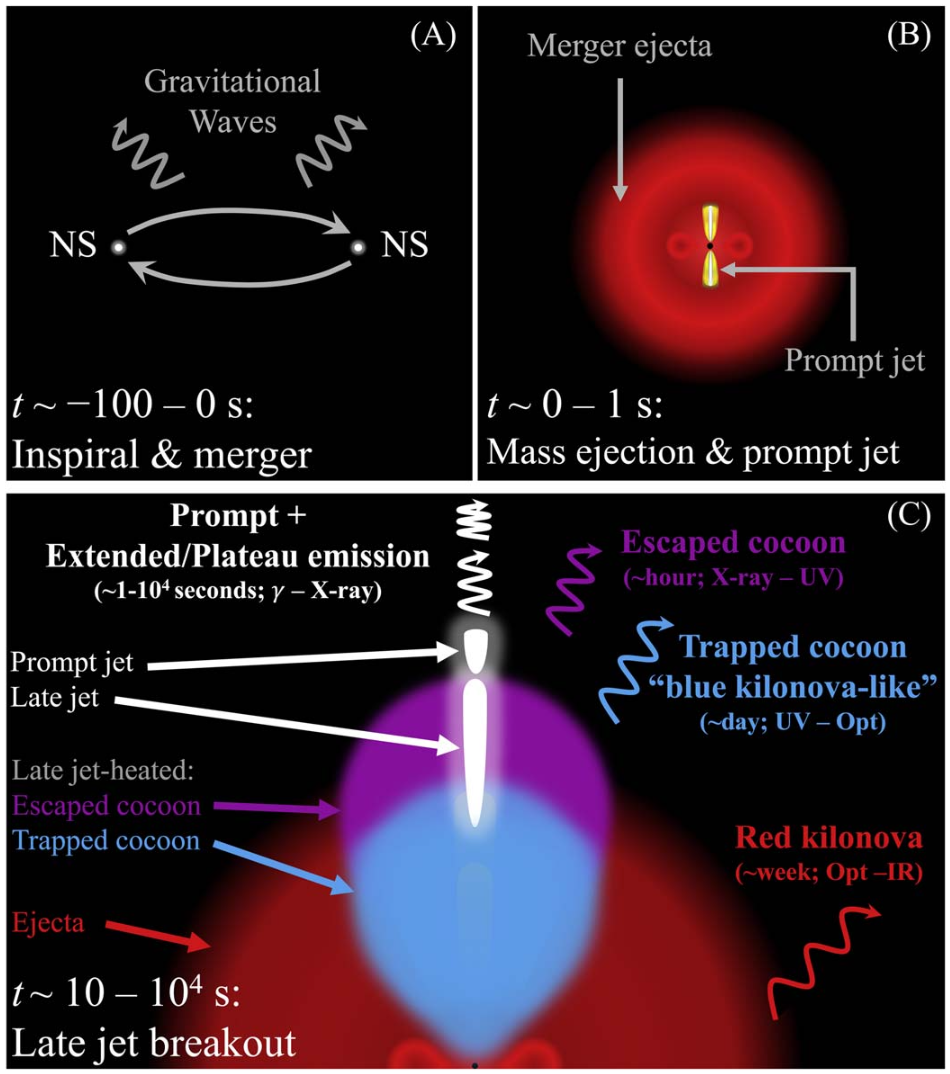
Cocoon Cooling Emission in Neutron Star Mergers
Hamidani & Ioka 2023b
We modeled the cooling emission from the jet-cocoon in BNS mergers, showing they can generate bright, but short-lived blue transients—relevant for future multi-messenger detections.

Cocoon Breakout in Neutron Star Mergers
Hamidani & Ioka 2023a
The cocoon produced by SGRB jets has been discussed as the origin of bright emission. We investigated the cocoon breakout and escape from BNS merger ejecta. We found that only a tiny fraction of the cocoon is able to escape, implying that emission from this cocoon is dimmer and shorter than previously thought.
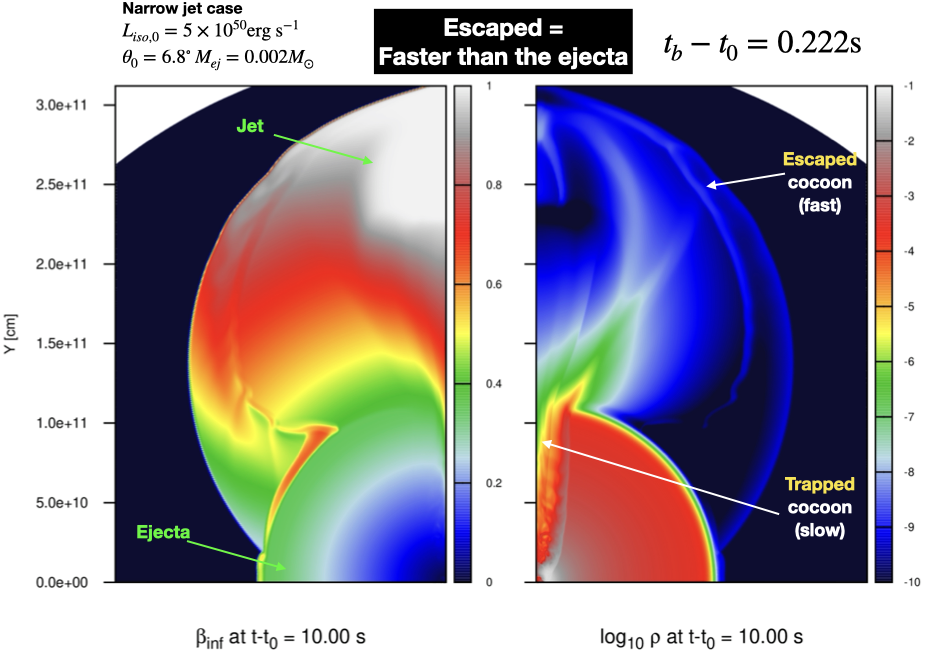
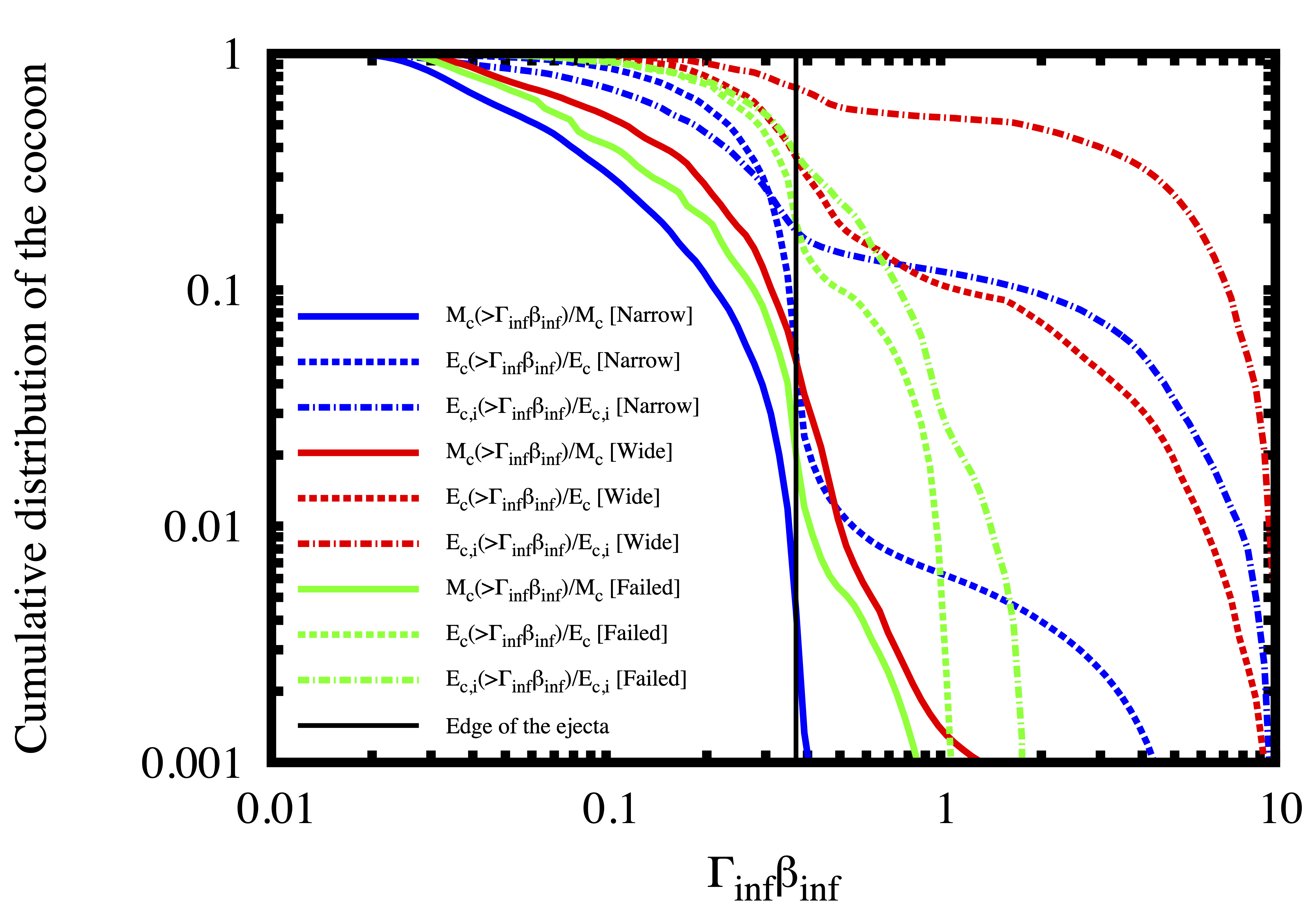
Jet Propagation in Expanding Media
Hamidani & Ioka 2021
We carried out numerical simulations of relativistic SGRB / LGRB jets propagating through expanding / static media:
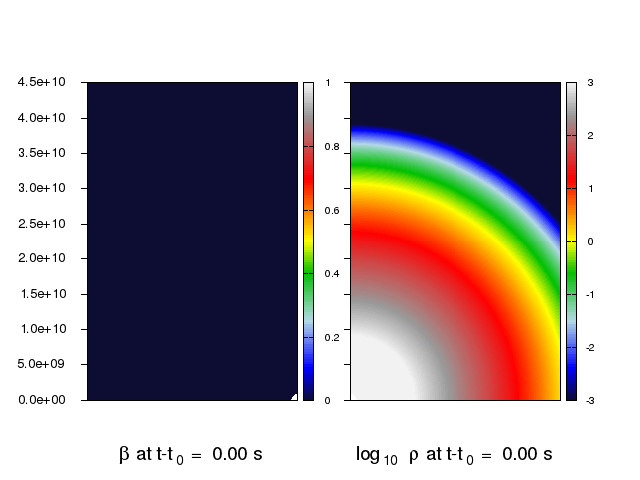
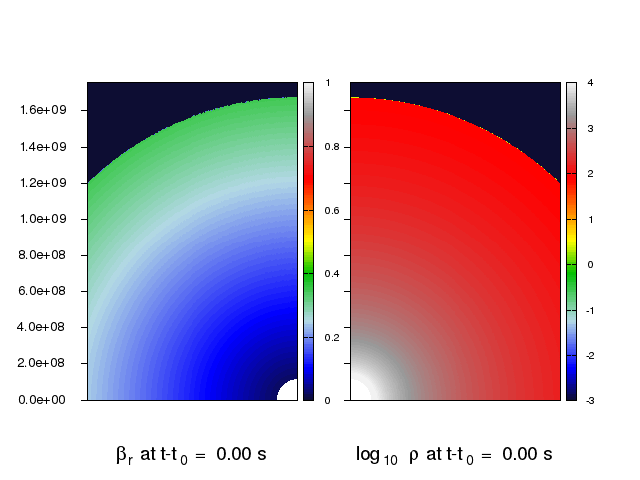
We solved the dynamics of SGRB / LGRB jets propagating through expanding / static media. We refined an analytic model that solves the jet dynamics in agreement with numerical simulations. This model is important to interpret observed SGRBs / LGRBs.
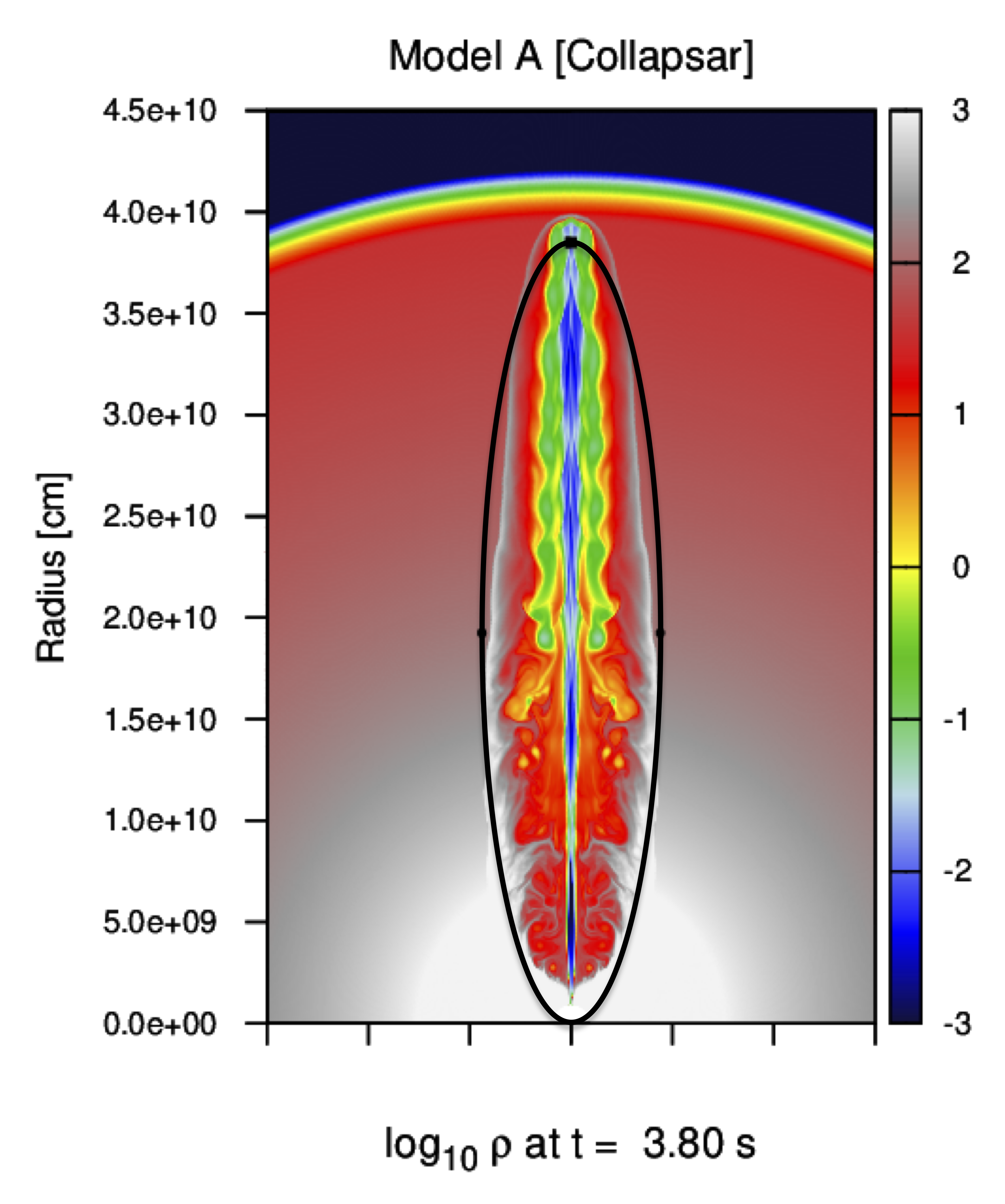


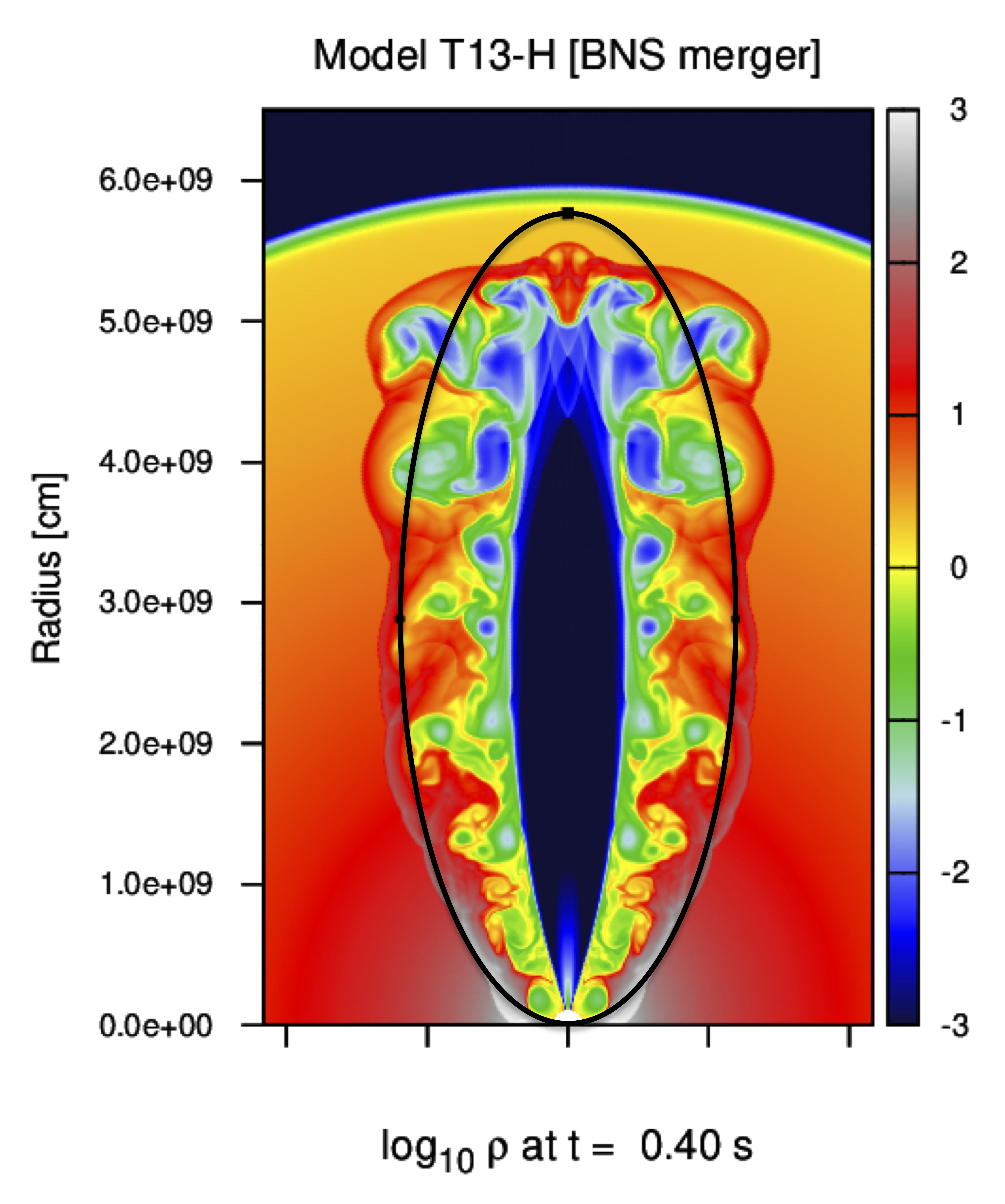
The First Neutron Star Merger Event: GW170817
Hamidani et al. 2020
In 2017, the first BNSmerger detected via gravitational waves (GW170817) was accompanied by an unusually weak SGRB (GRB 170817A) and an optical counterpart, AT 2017gfo. A key puzzle was the 1.7 second delay between the merger and the SGRB. Through jet simulations and analytical modeling, we showed that this delay requires the jet to be launched within 1.3 seconds after the merger. Our results suggest that the SGRB was not intrinsically weak—the observed faintness is instead due to our off-axis viewing angle.
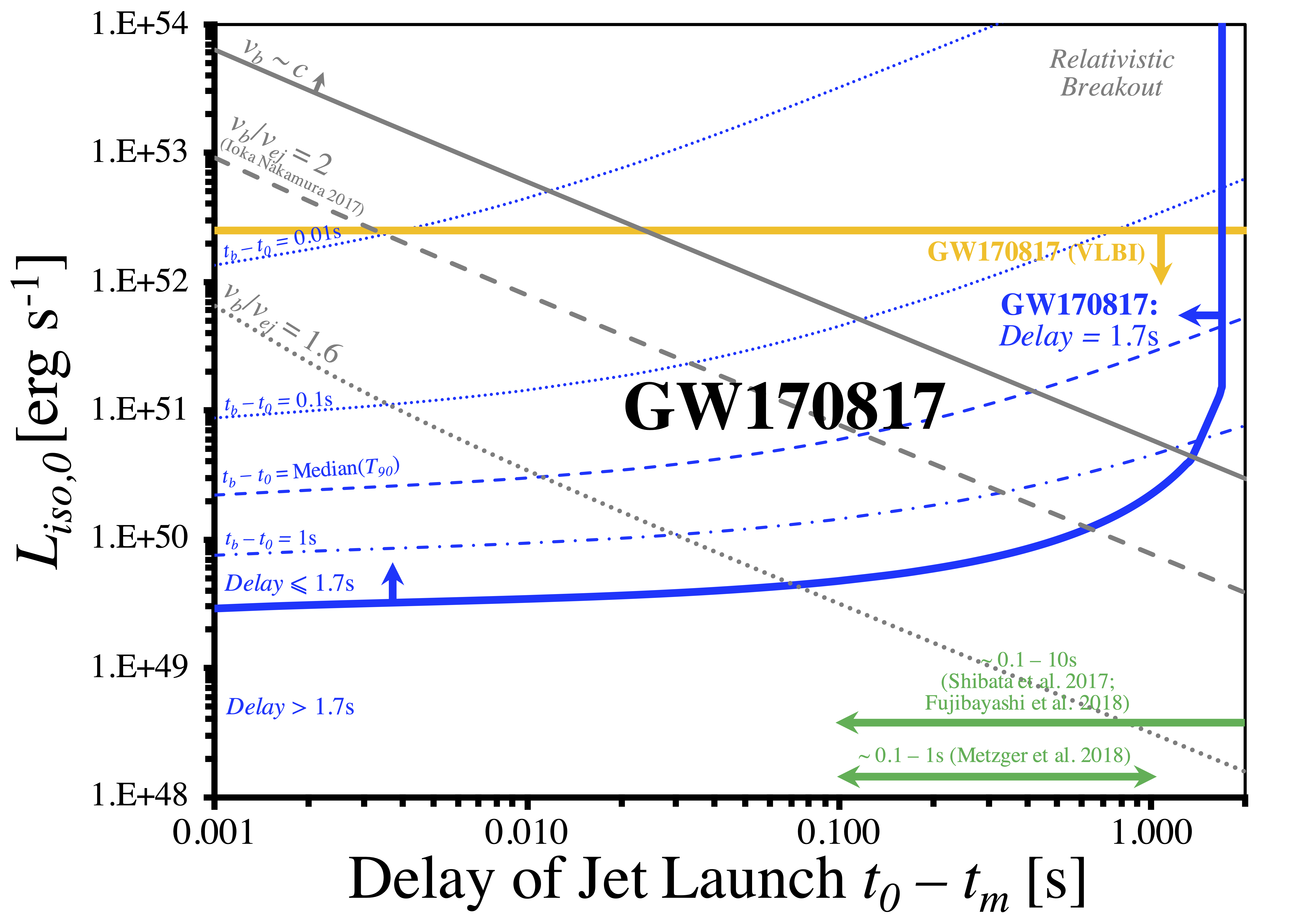
Ideal Engine Durations for GRB Jet Launch
Hamidani et al. 2017
We developed a new relativistic hydrodynamical code to study GRB jets. We also identified the optimal timescale for engine activity to launch typical LGRB jets as ~10–30 seconds.
